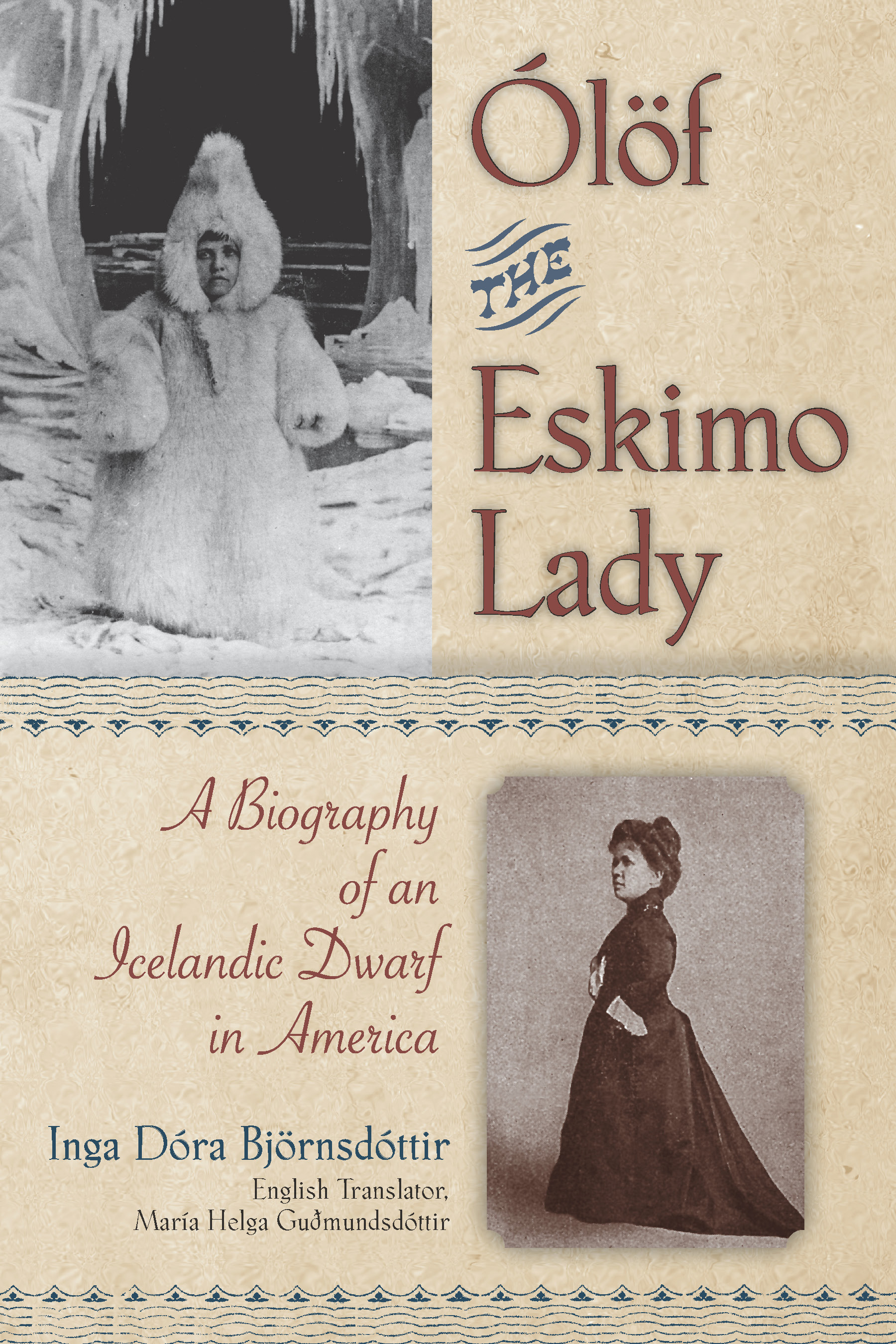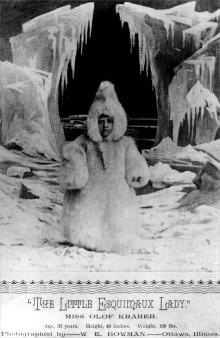


From the late 1880's to the early 1900's, Ólöf Krarer regaled listeners with incredible stories about her native Greenland and her own Eskimo heritage. She crossed the country, giving lectures and presentations –– more than 2,500 in all –– to audiences that included such luminaries as senator and presidential candidate William Jennings Bryan.
There was one catch, however: Krarer was not an Eskimo, and she had never set foot in Greenland. She was, in fact, a dwarf from Iceland who had immigrated to the United States at the age of 18. Unable to find steady employment outside of circus sideshows, she decided to reinvent herself as the Eskimo people assumed her to be.
Eventually, she changed her country of origin to Greenland –– there were no Eskimos in Iceland –– and took to the lecture circuit, sharing everything she knew about Eskimo culture. But nearly everything she said to the tens of thousands of people who flocked to hear her speak was a lie.
In her new book, "Ólöf the Eskimo Lady –– A Biography of an Icelandic Dwarf in America" (The University of Michigan Press, 2010), Inga Dóra Björnsdóttir, a lecturer in the Department of Anthropology at UC Santa Barbara, tells Krarer's life story and explores how one woman was able to fool so many people, including experts of the day. She places Krarer's story against the backdrop of America's fascination with the wild north and the expansion of the railroad, both of which propelled Krarer and her lies around the country.
"America at that time was the country with the greatest number of ethnic groups," Björnsdóttir said. "It was –– and perhaps still is –– the place where immigrants could most easily reinvent themselves and lead a life that would have been impossible in their native countries. At the same time, Americans were very ignorant about life and cultures in foreign lands, and harbored great prejudice against minorities and foreigners, a fact that Ólöf certainly used to her advantage."
At the time, according to Björnsdóttir, the race to be the first nation to reach the North Pole was part of America's quest for power and glory. "Without this race, at this particular time, Ólöf would never have been able to pull off her act," she said.
While "Ólöf the Eskimo Lady" brings attention to one of the greatest imposters in American history, it also highlights the prevailing attitudes toward handicapped people. As an achondroplastic dwarf, Krarer was condemned to live in the margins of Icelandic society. In the United States, however, she could not only change her identity, but also redefine the meaning of her body.
"As an Eskimo, she was no longer a dwarf," Björnsdóttir explained. "She was a normal Eskimo lady. She told her audiences that Eskimos were small with short arms, and claimed that, by Eskimo standards, she was exceptionally tall. As an Eskimo, she was no longer despised or ridiculed for her looks. She was seen as an interesting, exotic woman. Under those circumstances, Ólöf began to thrive, and was able to cultivate her intellect and other talents, and blossom into a storyteller and sought-after entertainer."
While several people did know the truth about Krarer's identity –– including Arctic explorer Robert E. Peary –– they chose not to reveal the hoax. Peary, for example, remained silent because the fascination her lectures engendered regarding the "Frozen North" served his own ambition to be the first person to reach the North Pole. It was not until after Krarer's death in 1935, at the age of 76, that the truth was revealed. Even then, however, her deception was all but ignored. "It might have been that by the time the hoax was exposed, she had been out of the public eye for so long that she had simply been forgotten," said Björnsdóttir.
"But I think the main reason her hoax did not become a sensation was the sense of shame among Americans, who considered themselves citizens of one of the most well- informed and most progressive nations. They had, out of ignorance and prejudice, been so easily fooled by a totally uneducated female dwarf from a small, poor island in the North Atlantic," she said.
Not only did Krarer gain tremendous popularity among the American public, Björnsdóttir noted, she also garnered respect in academic circles for her expertise on Eskimo life and culture. "I argue that the best thing, then, was to erase her life story from America's public memory," she said.
Related Links



